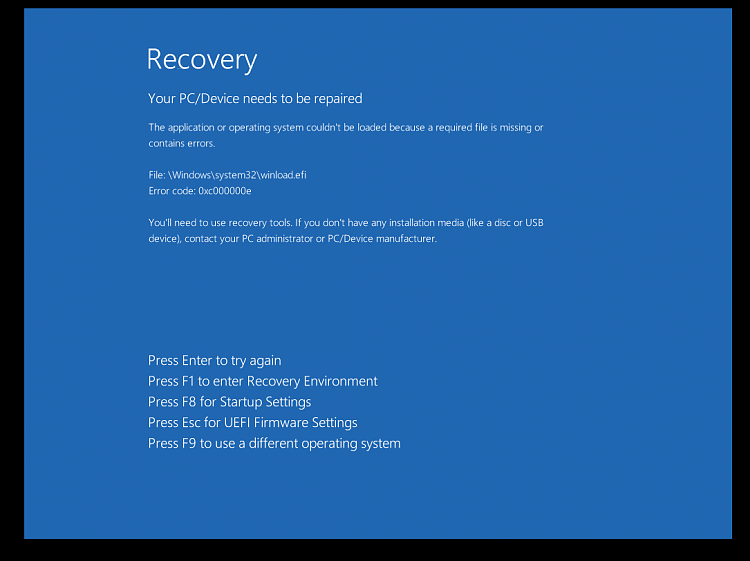New
#1
Native booting vhdx file not working
I've been trying to native boot Win10 on a vhdx virtual disk. I'm following this guide: You are being redirected....
Everything seems to work as it should. But when I reboot the system the following error is shown:
I'm testing this in a VMWare VM with UEFI boot and Secure Boot disabled. I think it has something to do with the bcdboot command but have no idea how to fix it. Has anyone done this successfully?



 Quote
Quote
